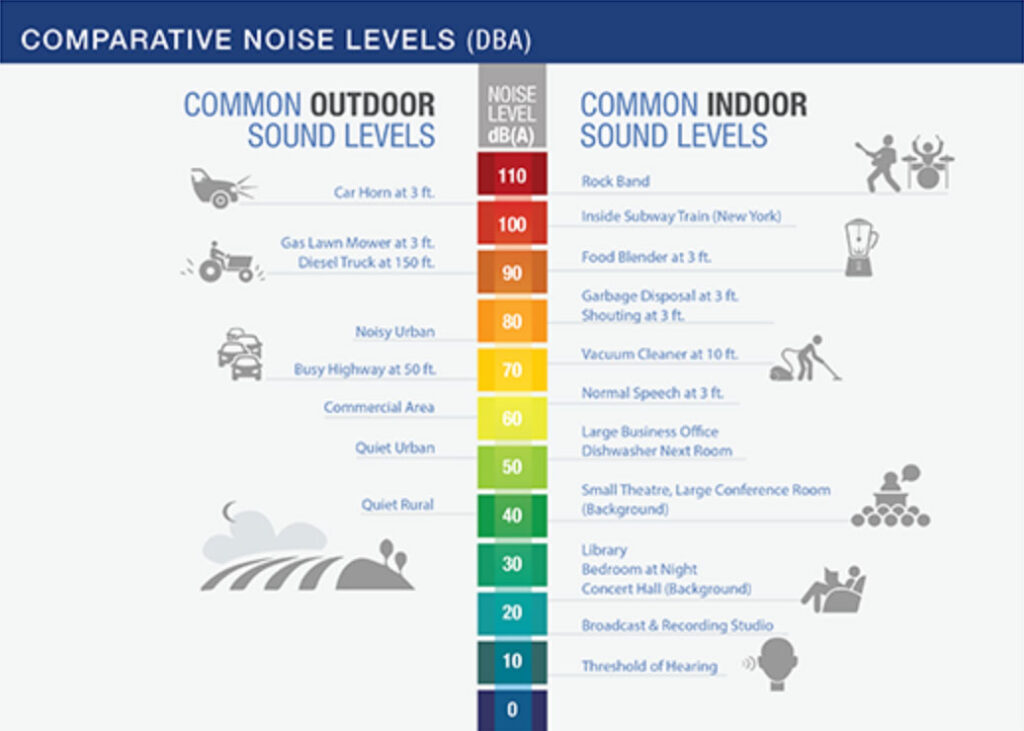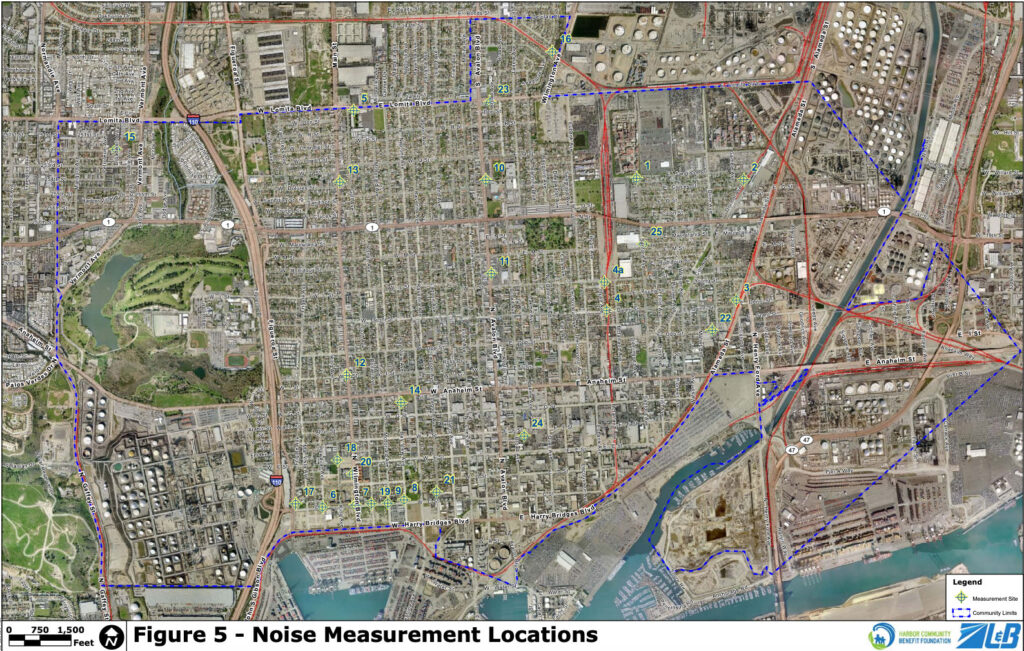Noise is all around you. Whether we like it or not, it occurs at all hours, day and night. All residents are exposed to some level of noise, but we never consider it to be an environmental impact that can even affect one’s health. Environmental noise pollution does just that, and is of greatest concern for those living near busy roadways, railroad networks, or industrial activity.
Wilmington and San Pedro residents living in close proximity to the Port and other port-serving industries are well aware of the noise that can come from all the activity. Exposure to noise, whether acute or chronic, have been shown to have direct impacts like hearing loss, and indirect health impacts associated sleep loss, behavioral changes and impacts on mental health and well-being. Children being exposed to excessive environmental noise pollution is also of concern since research has shown increased risk of various cognitive impacts such as impaired speech, language and other impaired learning abilities.
What is noise and how is it measured?
Noise is defined as an unwanted sound that has the ability to produce severe adverse effects on the surrounding community. Sound is described in terms of the loudness (or the amplitude of the wave) and frequency (pitch) of the sound. Decibels are used to measure loudness and are based on the logarithmic scale.
Although this is standard, a special frequency dependent scale was developed to account for the human ear being unequally sensitive to varying frequencies. This scale is called the A-weighted decibel scale (dBA) and works to approximate the sensitivity of the human ear. Distance from the source, the ability of the ground and atmosphere to dampen and absorb sound are factors that can impact the amount of noise that is heard from the observer. This graphic from the Federal Aviation Administration provides some examples of common indoor and outdoor noise levels. It should be noted that sounds that are of 85 dBA or higher can cause hearing loss.

Federal Aviation Administration. (2020, July 13). Comparative Noise Levels [Graph]. Federal Aviation Administration. https://www.faa.gov/regulations_policies/policy_guidance/noise/basics/
Noise and its Related Impacts
The criterion of noise impacts that are recognized are: hearing loss, speech interference, sleep interference, physiological response, and annoyance. Fortunately, in the case of port related activities, hearing loss is not of great concern to surrounding residents. Noise induced hearing loss is mostly associated with occupational noise exposures in heavy industry and very noisy work.
Speech interference is mostly impacted, as normal conversations range between 60-65 dBA and anything above this can interfere. Sleep interference does not necessarily describe waking during sleep but can include altering patterns and stages of sleep. Traffic noise and interior noise levels have been shown to heavily impact sleep. Sleep disturbances are associated with a variety of health problems, such as functional impairment, medical disability, and utilization of treatment. In addition, these difficulties may result in increased use of medical services even among those with no previous health problems.
Physiological response refers to a measurable effect of noise on people that is demonstrated through changes in pulse rate, blood pressure, among other things. Annoyance is difficult to describe as it is an individual characteristic that can vary greatly among people of equal hearing capability.
There are a multitude of high noise sites in the Wilmington and San Pedro areas that consist of railroad, truck/road and port related facilities. To further analyze the impact of noise in these areas, Harbor Community Benefit Foundation comissioned the Wilmington Noise Impact Study (https://hcbf.org/research/wilmington-noise-study/) and the San Pedro Noise Impact Study (https://hcbf.org/research/san-pedro-noise-study/). In the Wilmington Noise Impact Study, measurements were performed where noise emanated from the TraPac facility operations. Some of the sites selected to measure the port area were located along C Street just north of the Waterfront Park at the ends of Hawaiian Avenue, Wilmington Boulevard, Gulf Avenue, McDonald Avenue, and Bay View Avenue.
The measurement sites are depicted in an aerial map included in the study. Port activity included back up beepers, trucks, lifts and any bangs that were audible at the sites. However, they did not generate noise levels greater than the background levels at 52 dBA. Trains traveling on the track along Harry Bridges Boulevard were sometimes audible at these sites but were less than the associated background noise.

However, there were a few train horn blasts that were higher than ambient levels and even reached 80 dBA. It is clear that noise-related impacts span beyond annoyance of surrounding residents and can have impacts on quality of life. It is important to note that these two studies are only the start of a long analysis to understand the full impact of noise. There are opportunities for further research to analyze the potential adverse health burden on the communities exposed to noise from the port and port-activities. Educating our youth and communities is integral to combatting this issue and working towards a sustainable solution.
This blog post is the first in a two-part series on port-related noise impacts. Next, noise mitigation measures will be discussed.
Sources:
Basner M, Müller U, Elmenhorst EM. Single and combined effects of air, road, and rail traffic noise on sleep and recuperation. Sleep. 2011;34(1):11–23.
Klatte M, Bergström K and Lachmann T (2013) Does noise affect learning? A short review on noise effects on cognitive performance in children. Front. Psychol. 4:578. doi: 10.3389/fpsyg.2013.00578
Landrum and Brown, Greve, F., Jones, M. B., Mercado, J., & Rodeiguez, A. (2012, September). Wilmington School & Residence Sound Attenuation Program, Noise Measurement Report. https://hcbf.org/wp-content/uploads/2014/06/2012.12.14.Report-1.Wilmington-Noise-Measurement-Report_with-Attachments3.pdf
Landrum and Brown & The Jones Payne Group. (2020, March). Port-Related Noise Impact Study For Community Of San Pedro, California. https://hcbf.org/research/san-pedro-noise-study
